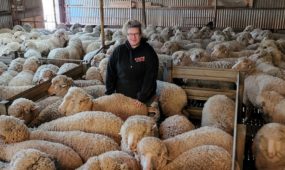The secret to high-fibre super spaghetti
Primary Industries
AUSTRALIAN scientists and their Italian colleagues have spent two years determining how to make a bowl of spaghetti healthier without compromising on taste.

Sign up to receive notifications about new stories in this category.
Thank you for subscribing to story notifications.
The researchers at the University of Adelaide and two other universities in Italy have studied the dietary fibre content in durum wheat.
The outer shell of a durum wheat kernel is used to make high-fibre wholemeal pasta, while the starchy inner parts of the kernel are used in traditional spaghetti.
Italian PhD student Ilaria Marcotuli has worked alongside the Australian Research Centre of Excellence in Plant Cell Walls to increase the fibre content in the inner parts of durum wheat.
“I had a look at the amount of dietary fibre found in durum wheat,” Marcotuli said. “So I determined which lines can be used for improving human health.”
PhD student Ilaria Marcotuli conducting research on durum wheat.
Wholemeal pasta is already known for its high dietary fibre but Professor Rachel Burton from The University of Adelaide said many people choose not to eat it because of its taste and texture.
“Italians tend to have their pasta 'al dente' which means it has a firmer texture, but the wholemeal tends to go a bit softer,” Prof Burton said.
Low dietary fibre intake affects people all over the world and has been linked to diseases such as diabetes, heart disease, Parkinson’s and even asthma and emphysema.
At the end of this month Marcotuli will return to Italy to correlate the data, but Director of the Plant Cell Walls centre Professor Geoff Fincher said the project is far from over.
“What we are trying to do is to identify the genes which are involved in the biosynthesis of these dietary fibre components, and once we know what the genes are we can think of ways to manipulate them,” he said.
Scientists from the Plant Cell Wall centre are also trying to increase the dietary fibre in betaglucan, which is found in oats and barley.
Jump to next article



